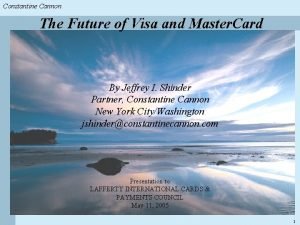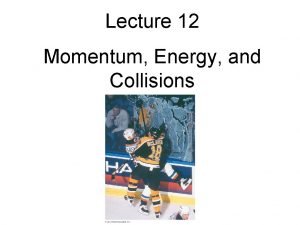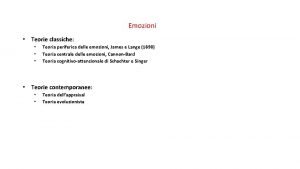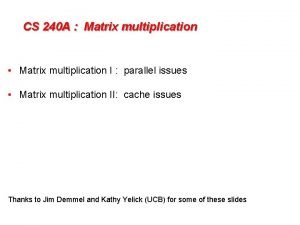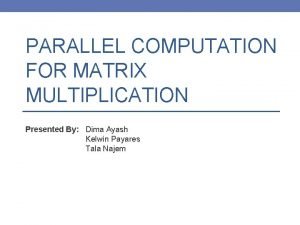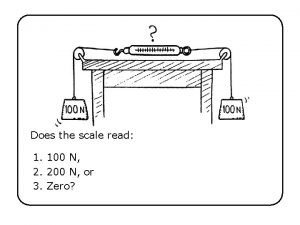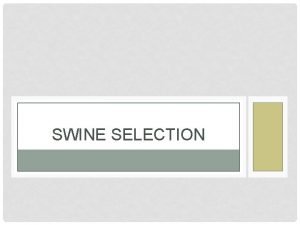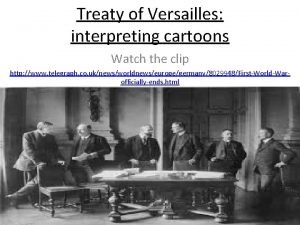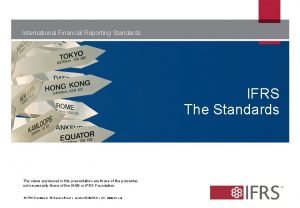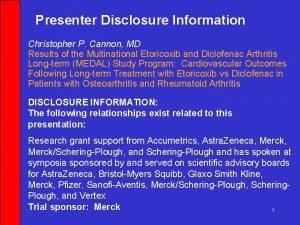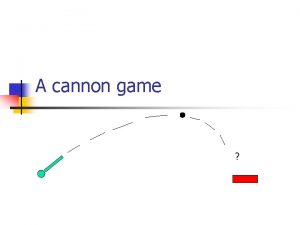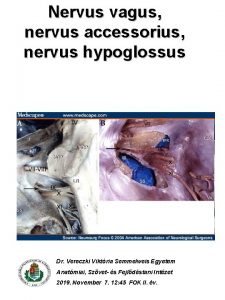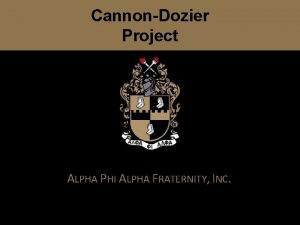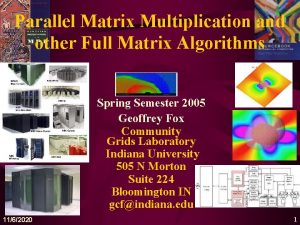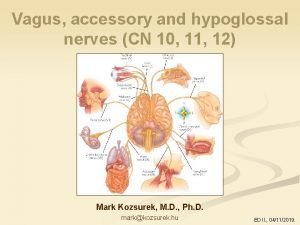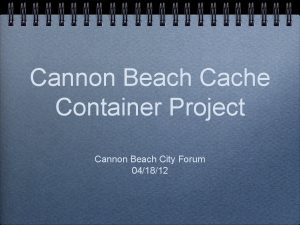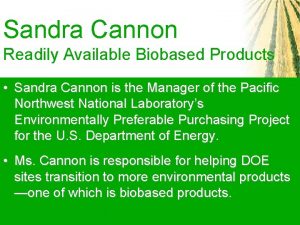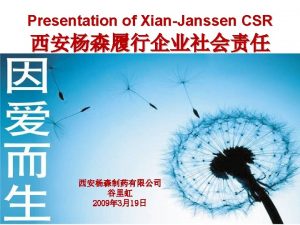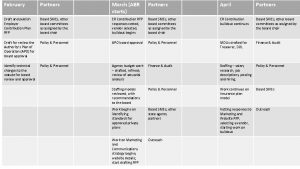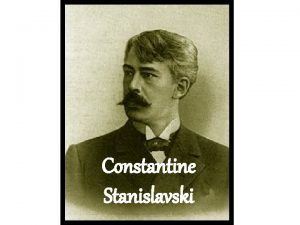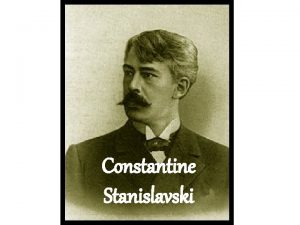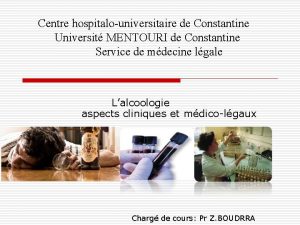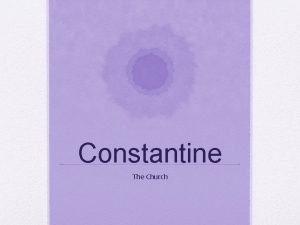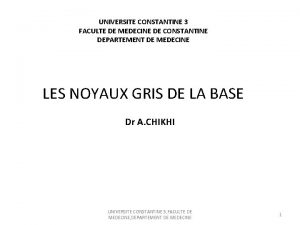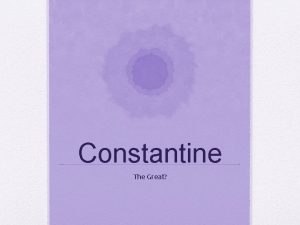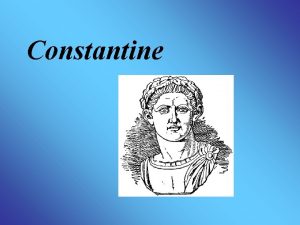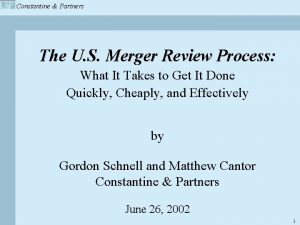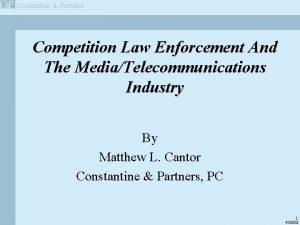Constantine Partners Constantine Cannon CC An Overview of









































- Slides: 41

Constantine & Partners Constantine Cannon CC An Overview of the Antitrust/IP Intersect By Jeffrey I. Shinder Partner, Constantine Cannon New York City/Washington jshinder@constantinecannon. com Presentation to The In-House Counsel Forum on Pharmaceutical Antitrust May 24 -25, 2005 11

Constantine & Partners Constantine Cannon CC Role of Antitrust • Protect consumer welfare • Reflects policy that competition benefits consumers by ensuring: – Lower prices – Increased output – Incentive to innovate 22

Constantine & Partners Constantine Cannon CC Key Antitrust Statutes • Sherman Act Section 1 • Sherman Act Section 2 • Clayton Act Section 7 • FTC Act Section 5 33

Constantine & Partners Constantine Cannon CC Antitrust Standards • Per se standard -- Practice is anticompetitive on its face; anticompetitive effects are presumed. • Rule of Reason -- Must prove anticompetitive effects with detailed economic analysis. 44

Constantine & Partners Constantine Cannon CC Sherman Act § 1 • Conspiracy to restrain trade – Requires concerted action involving at least two actors • E. g. , patent pools, licensing arrangements 55

Constantine & Partners Constantine Cannon CC Sherman Act § 1 -- Types of Claims • Horizontal Price Fixing -- Per se violation • Vertical Price Fixing – Minimum retail price maintenance -- per se – Maximum retail price maintenance -- Rule of Reason • Vertical Non-Price Restraints – Exclusive Territories--Rule of Reason – Exclusive Dealing--Rule of Reason 66

Constantine & Partners Constantine Cannon CC Sherman Act § 1 -- Types of Claims • Illegal tying -- technically per se claim, but really a hybrid between per se and Rule of Reason. – Elements of per se violation: • The products being “tied” are distinct; • Market power; • Forcing or actual tying; • An effect on a not insubstantial amount of interstate commerce; • Anticompetitive effects (in some circuits). 77

Constantine & Partners Constantine Cannon CC Sherman Act § 1 -- Types of Claims • Group Boycott--per se (if firm(s) have market power and/or deny access to elements essential to competition) • Market Allocation Schemes--per se 88

Constantine & Partners Constantine Cannon CC Sherman Act § 2 • Monopolization claims • Concerns unilateral single firm conduct 99

Constantine & Partners Constantine Cannon CC Sherman Act § 2 • A monopoly in and of itself is not illegal. • Acquiring monopoly power by being better is lawful. • The law places constraints on the behavior of a monopolist to ensure that it is not improperly maintaining its monopoly power or using its monopoly power in one market to monopolize or attempt to monopolize another. • The law constrains improper attempts to acquire monopoly power by firms who are dangerously close to acquiring such power. 10 10

Constantine & Partners Constantine Cannon CC Sherman Act § 2 -- Types of Claims • Elements of Monopolization – Possession of monopoly power – Such power achieved or maintained by exclusionary or anticompetitive conduct – Injury to competition 11 11

Constantine & Partners Constantine Cannon CC Sherman Act § 2 -- Types of Claims • Attempt to monopolize – Specific intent to monopolize markets – Overt acts – Dangerous probability of monopolization • Conspiracy to monopolize 12 12

Constantine & Partners Constantine Cannon CC Clayton Act § 7 • Statute that prohibits mergers that create or enhance or facilitate the exercise of market power in a relevant market. – Forward looking analysis -- incipiency standard • Merger cannot “substantially lessen competition” in a relevant market. 13 13

Constantine & Partners Constantine Cannon CC The Antitrust/IP Intersect History • Perceived tension between Antitrust & IP • Pre 1930 - IP trumps Antitrust; early cases gave patentees wide latitude • 1930 -1970 s-Antitrust Comes Back; Supreme Court retreats from earlier position • 1980 -Present; IP Again Trumps Antitrust? 14 14

Constantine & Partners Constantine Cannon CC The Antitrust/IP Intersect • 1995 DOJ/FTC Guidelines for the Licensing of Intellectual Property – IP should be treated like other forms of property under the antitrust laws – IP rights do not necessarily create market power in a relevant antitrust market – Licensing is generally pro-competitive 15 15

Constantine & Partners Constantine Cannon CC The Antitrust/IP Intersect • Is IP the same as other property for antitrust purposes? NO – Power to exclude derives from US Constitution – Power to exclude is designed to encourage innovation – Power to exclude is absolute – IP can be used simultaneously by competitors 16 16

Constantine & Partners Constantine Cannon CC Sherman Act § 2 • When Can Obtaining a Patent Violate Section 2? – When obtained through fraud on the PTO and enforced against alleged infringers – Impropriety defined by Patent Act – Other elements of Section 2 violation must be present 17 17

Constantine & Partners Constantine Cannon CC Sherman Act § 2 • Fraud on the PTO-Walker Process Claims – Misrepresentation or omission of material fact – Intent to deceive – Materiality: patent would not have issued but for misrepresentation or omission – Other elements of Section 2 claim: monopolization or dangerous probability of monopolization 18 18

Constantine & Partners Constantine Cannon CC Patent Acquisitions • When can acquiring a patent violate the antitrust laws? – IP acquisitions can violate Section 2 of the Sherman Act and Section 7 of the Clayton Act – Must show monopolization or dangerous probability of monopolization for Section 2 claim – Must show threatened substantial lessening of competition for Section 7 claim 19 19

Constantine & Partners Constantine Cannon CC Sherman Act § 2 --Patent Acquisition • Analyzing the antitrust risks of potential IP acquisitions – Does the acquiring firm have market power? If yes – Does the acquisition involve “exclusive rights”? – Does the acquisition concern rights in patents related to the subject matter of the monopoly? 20 20

Constantine & Partners Constantine Cannon CC Patent Acquisitions • If firm with market power – Acquires exclusive rights to related patents: serious antitrust issues – Acquires non-exclusive rights to related patents: likely permissible despite risks to competition – Acquires exclusive rights to unrelated patents: no antitrust issues 21 21

Constantine & Partners Constantine Cannon CC Sherman Act § 2: Enforcing IP Rights • When can a firm violate the antitrust laws by attempting to enforce its IP rights? – If enforcement is a “sham” it can violate Section 2 of the Sherman Act – If “sham” enforcement is done collectively it can violate Section 1 of the Sherman Act 22 22

Constantine & Partners Constantine Cannon CC Sherman Act § 2: Enforcing IP Rights • Basic Rule for Sham Litigation: Professional Real Estate Investors – “Suit must be objectively baseless … no reasonable litigant could realistically expect success on the merits” and – Suit must conceal an attempt to harm rivals 23 23

Constantine & Partners Constantine Cannon CC Sherman Act § 2: Enforcing IP Rights • When wrongful – Action based on fraudulently obtained patent – Action based on valid patents that are known to be unenforceable – Action based on valid patent where infringement plaintiff knew there was no infringement – Action based on clearly incorrect legal theory 24 24

Constantine & Partners Constantine Cannon CC Sherman Act § 2: Enforcing IP Rights • Does the immunity conferred by Professional Real Estate Investors extend to certain pre and post-litigation conduct? – Threats to enforce IP: Yes – Publication of infringement in the marketplace: Probably Yes – Threats and publication where litigation is never initiated: Maybe Not. – Settlements: Open question, probably not 25 25

Constantine & Partners Constantine Cannon CC Sherman Act § 2: Refusals to Deal • Can the owner of a lawfully-acquired patents ever violate Section 2 of the Sherman Act by refusing to license? – Most authorities say no 26 26

Constantine & Partners Constantine Cannon CC Sherman Act § 2: Refusals to Deal • Recent Case Law & Enforcement Activity – Image Technical (9 th Cir. )- lawful patent creates rebuttable presumption that refusal was lawful, but presumption was rebutted in that case – Intel – Xerox- refusal to license immune from antitrust, with three exceptions • Walker Process claim (i. e. , patent was fraudulently obtained) • Sham litigation • Illegal tying 27 27

Constantine & Partners Constantine Cannon CC Sherman Act § 1 • Greater tolerance for restraints involving IP – Most IP restraints have an ancillary character – Patent Act commands a tolerance for such agreements – Licenses are vertical restraints 28 28

Constantine & Partners Constantine Cannon CC Sherman Act § 1 • Key Question: Does the license have a horizontal aspect? – Would the parties to the agreement have been actual or likely potential competitors in the absence of the license? – Horizontal relationship could be found in product, technology, or innovation markets – If license is purely vertical • IP creates no additional complications for defendants • IP often provides compelling justifications • tying claims may be a concern 29 29

Constantine & Partners Constantine Cannon CC Sherman Act § 1: Licenses Affecting Price • Price of the license does not raise antitrust concerns • What if license requires the licensor to sell at prices set by licensor? – Permissible if patent covers all or a significant portion of resulting product – United States v. General Electric (1926 Supreme Court Case) 30 30

Constantine & Partners Constantine Cannon CC Sherman Act § 1: Licenses Affecting Price • GE still stands but has been limited to its facts – Line Material: declined to extend GE to cross-licensing arrangement in which resale price imposed on sub-licensees – United States Gypsum: declined to extend GE to licenses with resale price restrictions imposed on every producer in the industry • Other limitations to GE – Price limitation beyond first sale – Price restraint extends beyond the patent – Fixing prices of unpatented goods produced by patented process 31 31

Constantine & Partners Constantine Cannon CC Sherman Act § 1: Output Restraints • General Principles – Naked output limitations are illegal per se – Quantity limitations in vertical patent licenses are treated under the rule of reason and are generally lawful – May violate the antitrust laws when • Concerns unpatented product made with a patented process • Cross-licenses used as a façade by competing licensors and/or licensees to limit output and fix prices 32 32

Constantine & Partners Constantine Cannon CC Sherman Act § 1: Patent Pools/Cross. Licensing • Antitrust recognizes that they are often pro-competitive • IP Guidelines explain why they may be pro-competitive – Integrate complementary technology – Reduce transaction costs – Clear blocking positions – Avoid costly infringement actions • Cross-licensing without restrictions almost always lawful 33 33

Constantine & Partners Constantine Cannon CC Sherman Act § 1: Patent Pools/Cross. Licensing • They can violate the antitrust laws when: – Pool/cross-license includes restraints on price or output – Pool/cross-license is used to exclude rivals – Pool/cross-license includes agreement not to engage in certain types of research 34 34

Constantine & Partners Constantine Cannon CC Sherman Act § 1: Market Allocation Agreements • Territorial Divisions – Patent Act specifically permits them – Immune from antitrust challenge if relationship is purely vertical – Immunity does not extend to territorial restrictions after first sale – Reviewed under the Rule of Reason if license has a horizontal aspect 35 35

Constantine & Partners Constantine Cannon CC Sherman Act § 1: Market Allocation Agreements • Field of Use and Customer Restrictions – Treated as non-price vertical restraints and are usually lawful – Cannot be used to impose price restrictions on purchasers of products with unlimited right to sell the product – Can be illegal per se if used to create horizontal market allocation scheme • Patent is invalid • Patent is trivial component of final product 36 36

Constantine & Partners Constantine Cannon CC Sherman Act § 1: Exclusive Dealing • Can patentee condition its license or sale of patented good on agreement not to purchase competing goods? – Yes, if sufficient percentage of market is available to competitors – Yes, if exclusive is easily terminated – Yes, if efficiencies outweigh possible harm to competition 37 37

Constantine & Partners Constantine Cannon CC Sherman Act § 1: Tying • Background – Early Supreme Court cases held that market power can be presumed from patent – Courts condemned tying as patent misuse without inquiring into market power or anti-competitive effects – 1988 Patent Misuse Reform Act: must show market power – Courts mixed: some follow early Supreme Court market power presumption, some do not – Courts mixed: some say patent misuse same as tying under antitrust law, others do not 38 38

Constantine & Partners Constantine Cannon CC Sherman Act § 1: Tying • Distinct Products – Bundles with staples are distinct products – Bundles with non-staples are single products – Blocking patents are one product 39 39

Constantine & Partners Constantine Cannon CC Sherman Act § 1: Tying • Market Power in Tying Product Market – Courts have inferred market power from IP – Leading Supreme Court case demanded actual proof of market power, but appeared to allow the inference of such power from a patent – Lower courts generally demanded actual proof of market power – 1988 Patent Misuse Reform Act: requires market power over tying product 40 40

Constantine & Partners Constantine Cannon CC Sherman Act § 1: Tying • Anti-competitive Effects in Tied Product Market – Supreme Court decisions suggest that de minimis foreclosure of commerce is sufficient – Lower courts are mixed, many Circuits now require anti-competitive effects in tied product market – IP Guidelines require an adverse effect on competition 41 41
 Constantine rise of christianity
Constantine rise of christianity Constantine cannon
Constantine cannon Constantine cannon vault
Constantine cannon vault Nazofaringe anatomie
Nazofaringe anatomie A plate drops onto a smooth floor
A plate drops onto a smooth floor Schachter e singer
Schachter e singer Christopher cannon md
Christopher cannon md Komunikasi antar sel
Komunikasi antar sel Matrix
Matrix Fox algorithm matrix multiplication
Fox algorithm matrix multiplication Arnold strongman and suzie small each pull
Arnold strongman and suzie small each pull Cannon bone pig
Cannon bone pig Cannon street station
Cannon street station Monarch 155 mm
Monarch 155 mm At the peace table cartoon analysis
At the peace table cartoon analysis Emocin
Emocin Appraisals in lazarus's theory of emotion
Appraisals in lazarus's theory of emotion 6.his ne demek
6.his ne demek Party cannon
Party cannon Annie jump cannon quotes
Annie jump cannon quotes Christopher p cannon
Christopher p cannon James lange vs cannon bard
James lange vs cannon bard Cannon
Cannon Kussmaul sign
Kussmaul sign Coil railgun
Coil railgun Claire cannon
Claire cannon Cannon-bard theory vs james-lange
Cannon-bard theory vs james-lange Deborah cannon wolfe
Deborah cannon wolfe Walter cannon observed that a variety of stressors trigger
Walter cannon observed that a variety of stressors trigger Example of yerkes dodson law
Example of yerkes dodson law David malin
David malin Toroidal vortex cannon
Toroidal vortex cannon Nervus hypoglossus
Nervus hypoglossus Cannon dozier project
Cannon dozier project Schachter singer theory
Schachter singer theory Larissa cannon
Larissa cannon Cannon's postulates
Cannon's postulates Motivational interviewing basics
Motivational interviewing basics Cannon hall museum, park and gardens
Cannon hall museum, park and gardens Cannon algorithm
Cannon algorithm Contoh teori emosi cannon bard
Contoh teori emosi cannon bard Geniohyoid and thyrohyoid innervation
Geniohyoid and thyrohyoid innervation

